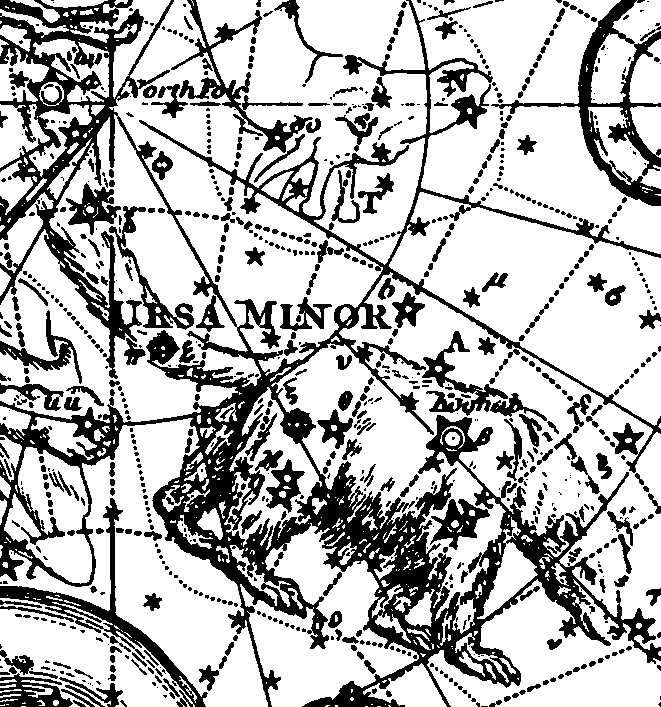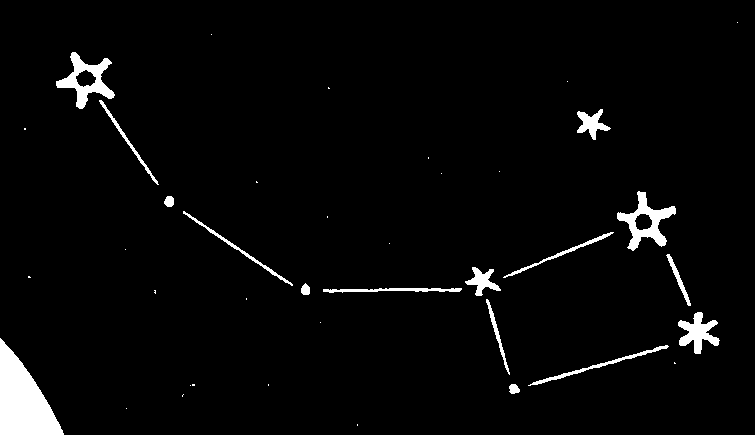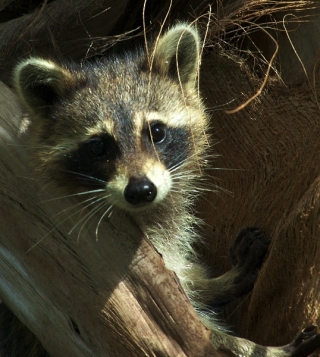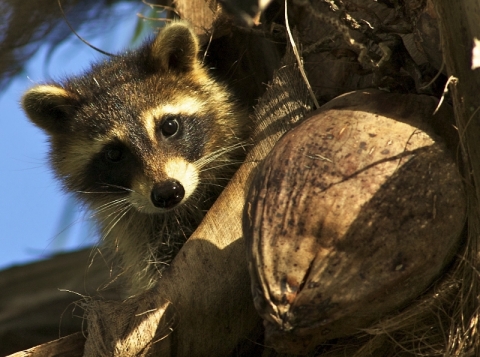Haven’t had a whole lot to post about lately; instead of being outside in the heat snapping pictures and exploring my field site (my yard), I’ve been inside tending to work matters. This morning, though, I got a call from Eric’s room: “Photo op!” I hustled over there in time to see three young raccoons (called kits) prowling around our front yard. Apparently they’d climbed down out of our coconut tree while Eric and mommy sat in the room stunned and amazed at the audacity of these little bitty masked marauders.
I grabbed the camera and ran outside in time to snap a few photos:
These little guys have such charisma! And when they scramble up the tree to maintain a safe distance, they sometimes forget to be scared of the big bad human with the camera, so they start exploring their surroundings. Here’s one who found a coconut and is trying to figure out whether to try to grab it or keep an eye on me:
Raccoons are among a handful of animals that actually do well in our increasingly urbanized environment (think crow, rat, coyote). All of these species are highly adaptable and intelligent generalist predators and/or scavengers, able to exploit new food resources like garbage cans and dumps when old ones are crowded out or paved over.
For more on raccoons written from a Florida perspective, check out this great UF/IFAS circular.
Raccoon as little bear, little dog, the real Ursa Minor?
The taxonomy of the species has changed somewhat over time; Linnaeus, who first described the species in modern scientific binomials, placed it in the genus Ursus, which is, of course, bear: Ursus cauda elongata was the name he gave it in 1758.
Despite the inaccuracy of that placement from a modern taxonomic viewpoint, it is quite suggestive mythologically and astronomically. After all, both the big and little bears up in the sky (Ursa Major and Ursa Minor) have elongated tails. I think the raccoon is the perfect update to the little bear, seen here in a 19th-century depiction by Alexander Jamieson (the pole star is at the tip of the tail):

Doesn’t the long-tailed bear seem a lot more like a raccoon?
Here’s a modern rendition by that inveterate revisionist (and simplifier), H.A. Rey; looks nothing like a bear or raccoon in this version, which is why he stuck with the “unofficial” name, the Little Dipper:

The etymological work on this charismatic species is quite large; here is Wikipedia’s current summation:
The word “raccoon” was adopted into English from the native Powhatan term, as used in the Virginia Colony. It was recorded on Captain John Smith‘s list of Powhatan words as aroughcun, and on that of William Strachey as arathkone. It has also been identified as a Proto-Algonquian root *ahrah-koon-em, meaning “[the] one who rubs, scrubs and scratches with its hands”.
Similarly, Spanish colonists adopted the Spanish word mapache from the Nahuatlmapachitli of the Aztecs, meaning “[the] one who takes everything in its hands”. In many languages, the raccoon is named for its characteristic dousing behavior in conjunction with that language’s term for bear, for example Waschbär in German, orsetto lavatore in Italian, mosómedve in Hungarian and araiguma (アライグマ) in Japanese. In French and Portuguese (in Portugal), the washing behavior is combined with these languages’ term for rat, yielding, respectively, raton laveur and ratão-lavadeiro. In Dutch, they are called “wasbeer” (“wash bear”) and in Sranantongo (Surinamese) they are called “krabdagu” (“scratch-dog”).
The colloquial abbreviation coon is used in words like coonskin for fur clothing and in phrases like old coon as a self-designation of trappers. However, the clipped form is also in use as an ethnic slur. The raccoon’s scientific name,Procyon lotor, is neo-Latin, meaning “before-dog washer”, with lotor Latin for “washer” and Procyon Latinized Greek from προ-, “before” and κύων, “dog”.
Whatever you want to call them, these little guys are a lot of fun to watch. Cheers!


